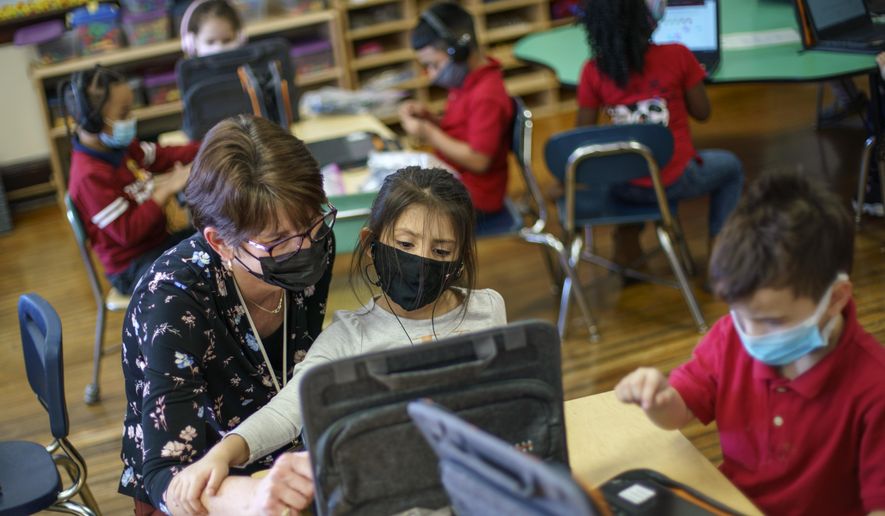Public schools are adding mental health staff and “therapeutic support classrooms” to absorb an expected flood of anxious and depressed students returning next month from two years of virtual learning, according to the tracking website Burbio.
Burbio reported that its School Budget Tracker showed a spike in K-12 spending on social-emotional learning (SEL) and mental health services as many school districts prepare for their first full year of in-person learning since before the pandemic.
Virginia’s Spotsylvania County Public Schools is adding five full-time equivalent school psychologists and four full-time equivalent employees for health and wellness services.
In Massachusetts, the Fall River Public Schools is adding a director of SEL and mental health services, SEL integration specialist, lead family engagement specialist and movement therapist to serve as a “launchpad to increase the number of mental health professionals that are trained to offer specialty therapeutic services.”
Idaho’s Post Fall School District has budgeted for a “therapeutic support classroom.” Similarly, South Carolina’s Beaufort County School District is creating a “virtual calming room” with links to exercise and yoga, live animal videos, puzzles, games and crisis hotline resources.
California-based psychologist Thomas Plante, a fellow of the American Psychological Association, welcomed the resources as necessary to help teachers and parents who felt overwhelmed during school closures.
“Teachers and parents can be trained in mental health first aid, which can help, but many of these issues and challenges are beyond their expertise and there aren’t enough mental health professionals to provide service to all,” Mr. Plante said in an email.
The Santa Clara University psychology professor said divisive politics, climate change anxiety, increasing economic insecurity, racial justice protests, toxic social media, school shootings and a lack of stress management skills have added to a growing youth mental health crisis that “may last long after the pandemic.”
Both the APA and the U.S. surgeon general have issued warnings about the crisis in recent months.
Burbio reported Sunday that schools are also increasing employee salaries and bonuses this fall to address an ongoing shortage of staff that includes bus drivers and teachers, many of whom quit or retired during the pandemic.
In Texas, the Cypress-Fairbanks Independent School District has approved compensation increases ranging from 6.7% to 12% for paraprofessional and support staff. By comparison, its teachers will receive a 3.9% increase and administrators a 2.6% raise.
During the new school year, Cypress-Fairbanks has budgeted an extra $15 million to hire teachers and paraprofessionals and an extra $6.2 million to hire elementary and middle school behavioral interventionists and testing coordinators.
“In a time of increased inflation and mental health concerns for our children, it is a relief to see that school districts are giving extra compensation to schools,” said Laura Linn Knight, an Arizona-based parenting coach.
Dr. William Schaffner, an infectious diseases specialist who teaches at Vanderbilt University Medical Center, said the “residual effect of COVID keeping students at home” is causing “terrific turmoil and anxiety” for many of them.
The best way to prevent future school closures will be to have more children vaccinated against COVID-19, he added.
“We have a large percentage of children who are still not vaccinated. I hope parents will accept COVID vaccinations as well as routine vaccinations for their children when they return to school next month,” Dr. Schaffner said.
For more information, visit The Washington Times COVID-19 resource page.
• Sean Salai can be reached at ssalai@washingtontimes.com.




Please read our comment policy before commenting.